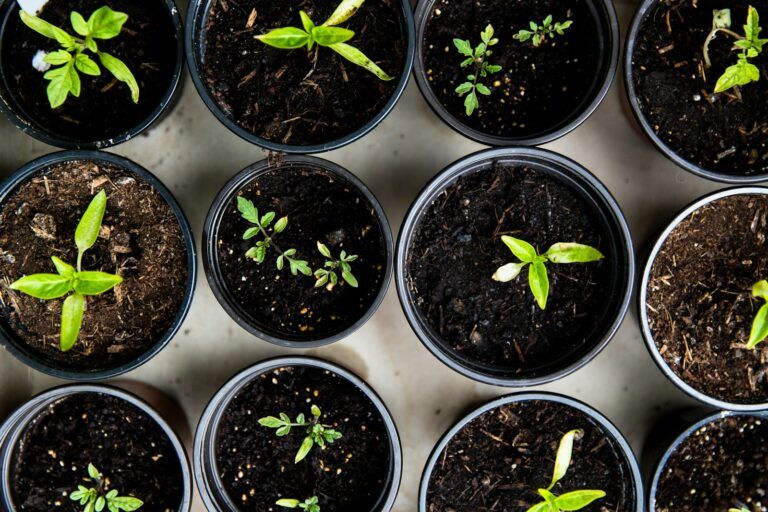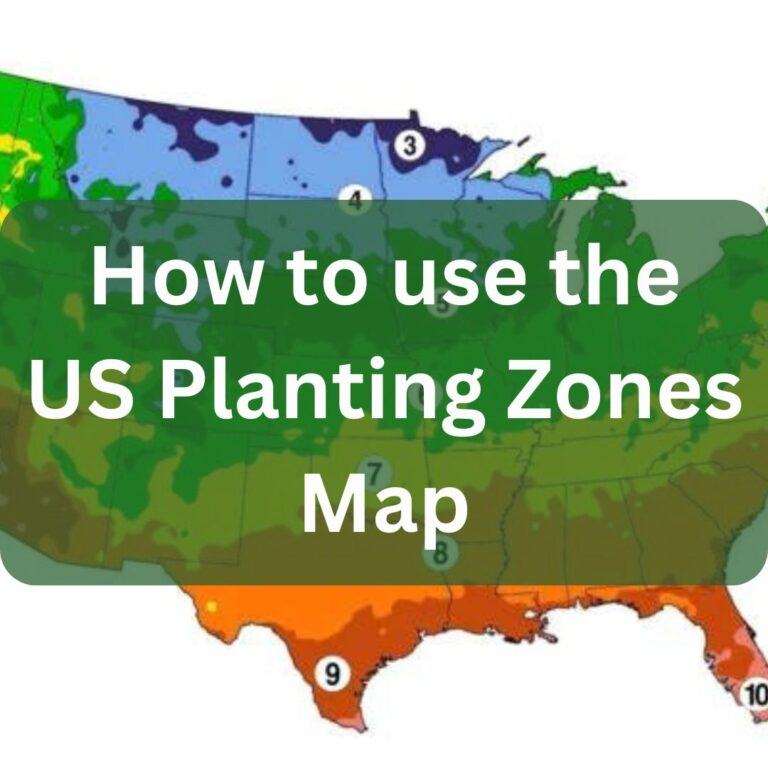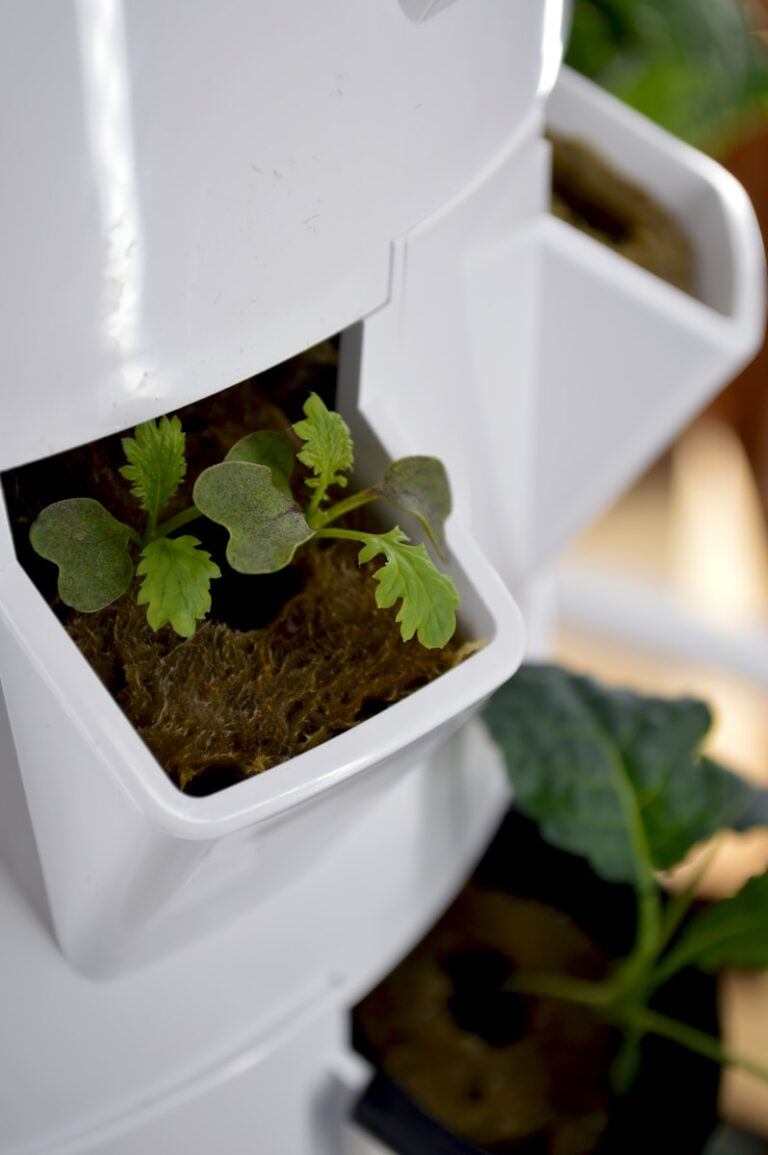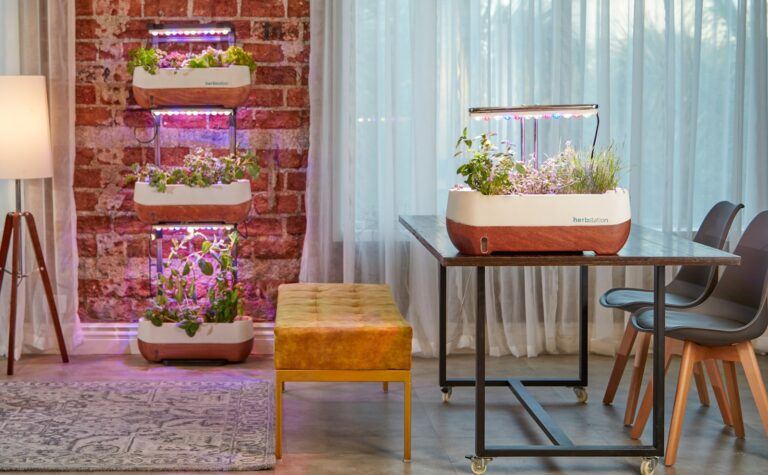How To Use Grow Lights For Plants: A Practical Guide
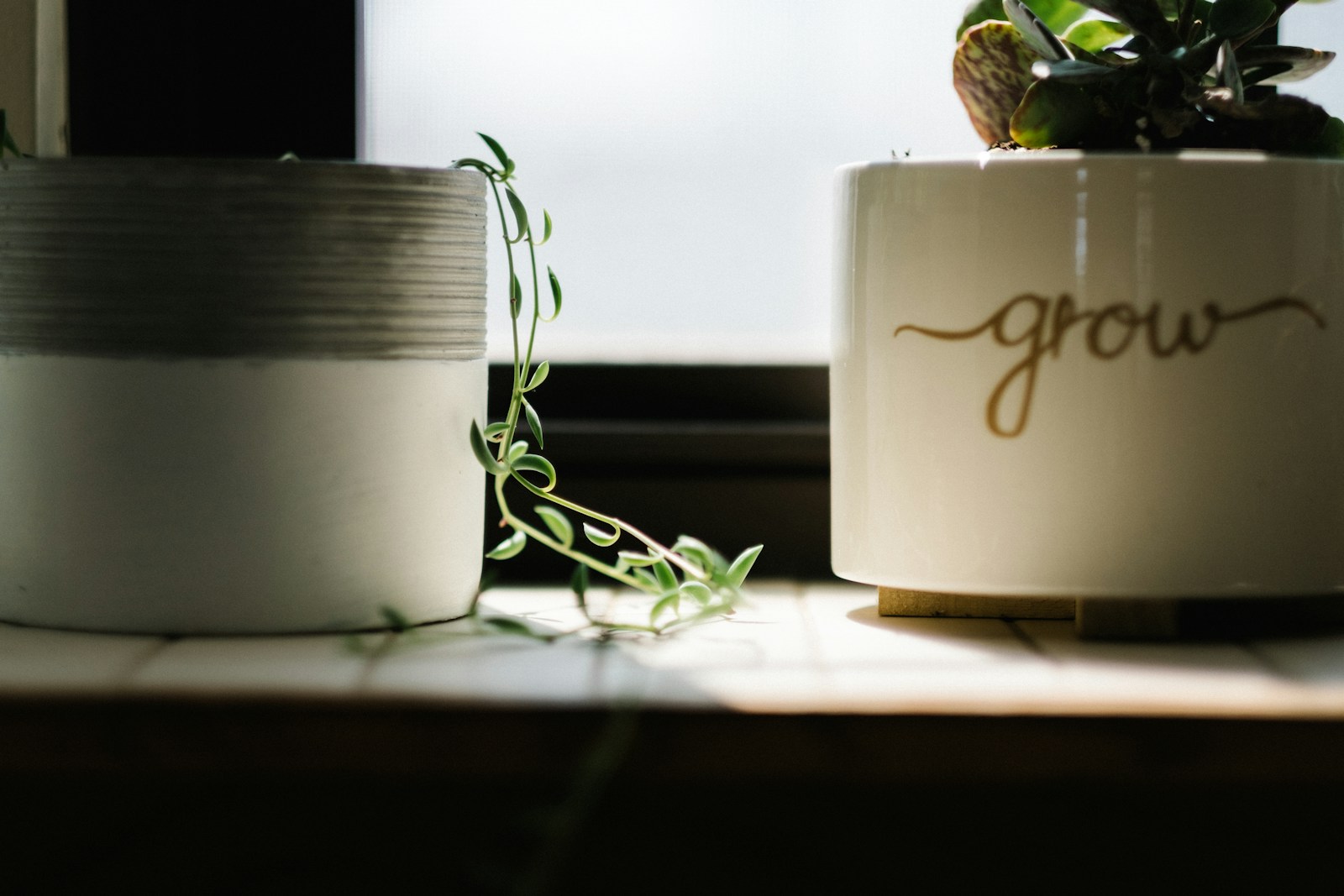
Grow lights are a popular solution for indoor gardening enthusiasts who want to grow plants year-round or in areas with limited sunlight. These lights are designed to mimic the natural light spectrum of the sun, providing plants with the energy they need to grow and thrive. Whether you’re growing vegetables, herbs, or flowers, understanding how to use grow lights properly is essential to ensure your plants receive the right amount of light and nutrients.

To get started with grow lights, it’s important to understand the different types of lights available and how they work. LED grow lights are the most popular option, as they are energy-efficient and produce less heat than other types of lights. Fluorescent lights are also a good choice for indoor gardening, as they are affordable and emit a full spectrum of light. High-intensity discharge (HID) lights are the most powerful type of grow light, but they are also the most expensive and produce a lot of heat.
Once you’ve chosen the right type of grow light for your plants, you’ll need to set up your lights and create a lighting schedule. This involves positioning your lights at the right distance from your plants, as well as determining how long your plants need to be exposed to light each day. Monitoring your plants’ growth and adjusting your lighting schedule as needed is also important to ensure your plants receive the right amount of light. By following these guidelines, you can use grow lights to create a thriving indoor garden.
Key Takeaways
- Understanding the different types of grow lights available is essential to choosing the right light for your plants.
- Properly setting up your grow lights and creating a lighting schedule is important to ensure your plants receive the right amount of light.
- Monitoring your plants’ growth and adjusting your lighting schedule as needed is crucial to ensuring a successful indoor garden.
Understanding Grow Lights
Types of Grow Lights
Grow lights come in different types, each with its own unique features and benefits. The most common types of grow lights are:
- Incandescent: These are the least expensive and produce a lot of heat. They are not very efficient and are not recommended for growing plants.
- Fluorescent: These are more expensive than incandescent lights, but are more energy-efficient and produce less heat. They are good for growing seedlings and small plants.
- LED: These lights are the most expensive, but they are also the most energy-efficient and produce very little heat. They are good for growing all types of plants and are the most popular type of grow light.
- High-intensity discharge (HID): These lights are very powerful and produce a lot of heat. They are good for growing large plants and are commonly used in commercial growing operations.
Benefits of Using Grow Lights
Grow lights provide many benefits for plants, especially when grown indoors. Some of the benefits of using grow lights are:
- Year-round growing: Grow lights allow plants to grow year-round, regardless of the weather conditions outside.
- Controlled environment: Indoor growing with grow lights allows for a controlled environment, where temperature, humidity, and light can be adjusted to suit the needs of the plants.
- Increased growth and yield: Grow lights provide plants with the necessary light for photosynthesis, which leads to increased growth and yield.
- Customizable light spectrum: Some grow lights allow for customizable light spectrum, which allows for optimal growth of different types of plants.
Understanding the different types of grow lights and their benefits is important when choosing the best grow light for your plants.
Setting Up Your Grow Lights
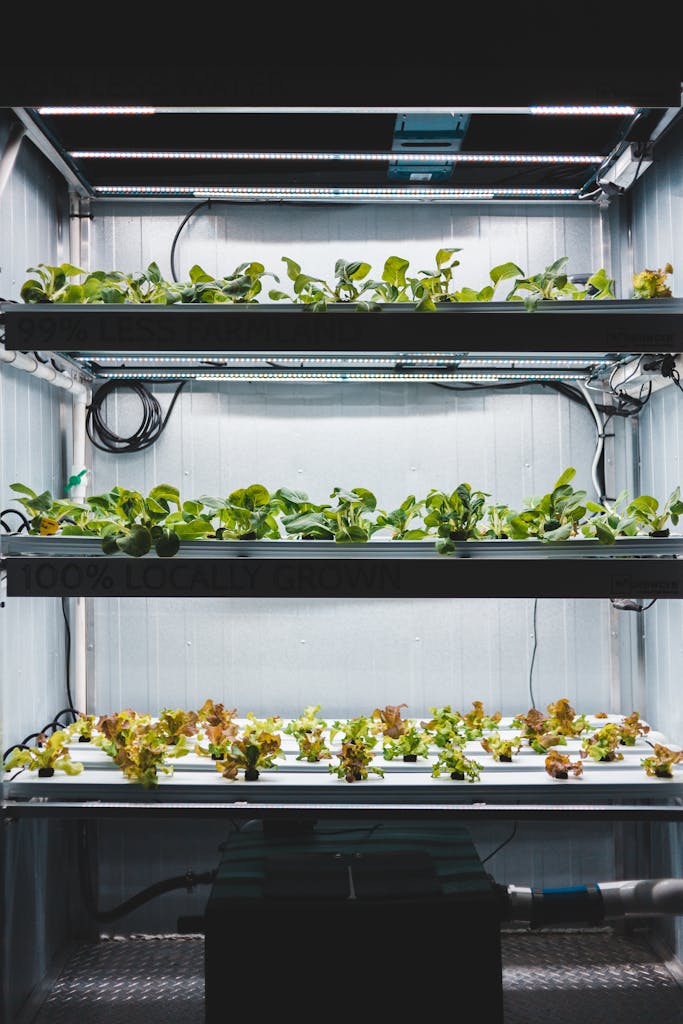
When it comes to setting up your grow lights, there are a few key things to keep in mind to ensure the best possible results for your plants. Here are some tips to help you get started:
Choosing the Right Location
The first step in setting up your grow lights is to choose the right location. You want to find a spot that is convenient for you to access but also provides the right environment for your plants. Ideally, you want a location that is:
- Close to an electrical outlet
- Free from drafts and temperature fluctuations
- Easy to access for watering and maintenance
Installing the Grow Lights
Once you have chosen the right location, the next step is to install your grow lights. There are a few different types of grow lights to choose from, including:
- Incandescent
- Fluorescent
- LED
- High-intensity discharge
Each type of grow light has its own benefits and drawbacks, so it’s important to do your research and choose the one that is best for your specific needs. Some factors to consider when choosing your grow lights include:
- The size of your grow space
- The type of plants you are growing
- Your budget
Adjusting Height and Angle
After you have installed your grow lights, you will need to adjust their height and angle to ensure that your plants are getting the right amount of light. As a general rule, you want to position your grow lights about 6-18 inches above your plants to avoid light deprivation. However, the exact distance will depend on the type of grow light you are using and the specific needs of your plants.
You may also need to adjust the angle of your grow lights to ensure that all parts of your plants are getting enough light. This is especially important if you are growing plants that have a lot of foliage or if you are using multiple grow lights to cover a larger area.
By following these tips for setting up your grow lights, you can help ensure that your plants get the light they need to thrive.
Lighting Schedules and Duration
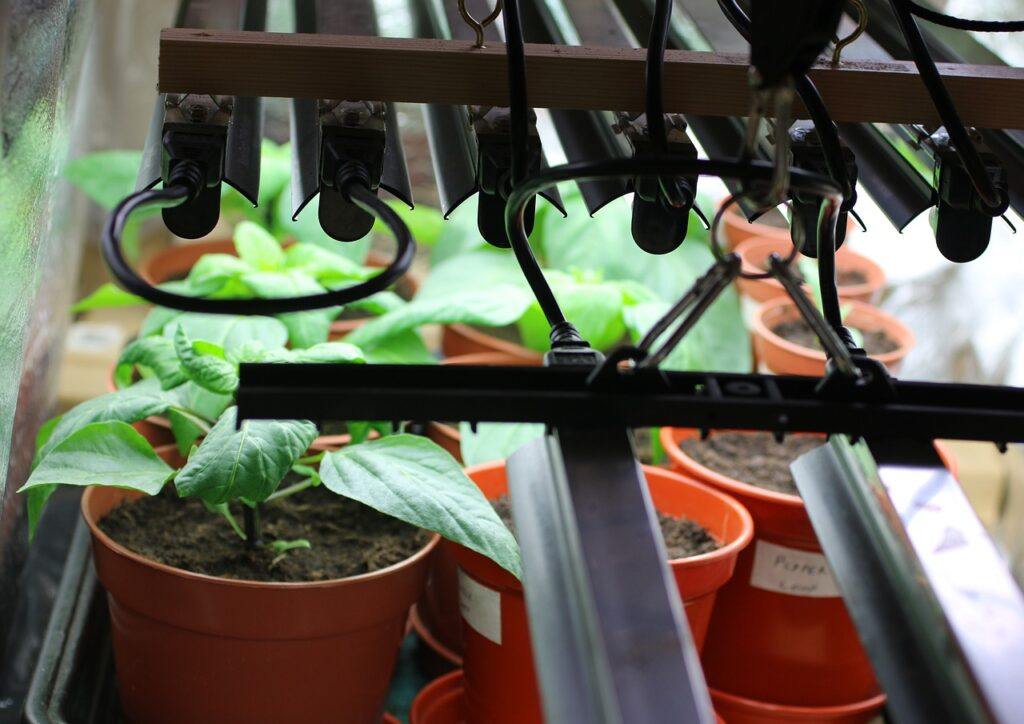
Determining Light Requirements
Different plants have different light requirements. Some plants require more light than others, while some can thrive in low light conditions. It is important to determine the light requirements of the plants you want to grow before setting up your grow lights.
One way to determine the light requirements of your plants is to research their natural habitat. Plants that grow in sunny areas require more light than those that grow in shady areas. Another way to determine the light requirements of your plants is to consult a gardening expert or a plant nursery.
Creating a Lighting Schedule
Once you have determined the light requirements of your plants, the next step is to create a lighting schedule. The lighting schedule should be based on the needs of the plants and should mimic the natural light cycle.
For plants that require a lot of light, it is recommended to use grow lights for 16-18 hours a day. For plants that require less light, 12-14 hours a day may be sufficient. It is important to give plants a period of darkness to allow them to rest and recover.
One way to create a lighting schedule is to use a timer. Timers can be set to turn the lights on and off at specific times, ensuring that plants receive the right amount of light each day. Another way to create a lighting schedule is to monitor the plants and adjust the lighting as needed. If plants are not growing as expected, it may be necessary to increase or decrease the amount of light they are receiving.
In summary, determining the light requirements of your plants and creating a lighting schedule are essential for successful indoor gardening. By providing the right amount of light, plants can thrive and grow to their full potential.
Monitoring Plant Growth
Grow lights can significantly enhance plant growth, but it is important to monitor the plants to ensure they are receiving the right amount of light. Two key aspects to monitor are observing plant responses and adjusting light intensity and duration.
Observing Plant Responses
One of the most effective ways to monitor plant growth is by observing the plant responses. This can be done by observing the color, size, and shape of the leaves, stems, and flowers. If the leaves are yellowing, it may indicate that the plant is receiving too much light. On the other hand, if the leaves are turning brown or curling up, it may indicate that the plant is not receiving enough light. If the plant is growing too tall and thin, it may indicate that the light intensity is too low.
Adjusting Light Intensity and Duration
Grow lights should be adjusted based on the plant’s growth stage. During the vegetative stage, plants require more blue light, while during the flowering stage, they require more red light. It is important to adjust the light intensity and duration accordingly. For example, during the vegetative stage, the lights should be on for 16-18 hours a day, while during the flowering stage, they should be on for 12 hours a day.
Grow lights should be positioned at the right distance from the plants. If the lights are too close, they can damage the plants, while if they are too far away, they may not provide enough light. The distance between the grow light and the plant varies depending on the type of light and the plant species. As a general rule, the grow lights should be placed 6-18 inches above the plants to avoid light deprivation.
In summary, monitoring plant growth is crucial when using grow lights. By observing plant responses and adjusting light intensity and duration, growers can ensure that their plants receive the right amount of light for optimal growth.
Maintenance and Safety
Cleaning and Maintaining Grow Lights
Proper maintenance of grow lights is essential to ensure optimal plant growth and prevent damage to the lights. Dust and debris can accumulate on the surface of the bulbs, reducing their effectiveness. Therefore, it is important to clean the grow lights regularly. To clean the grow lights, turn them off and allow them to cool down. Then, use a soft cloth or brush to wipe the surface of the bulbs gently. Avoid using water or harsh chemicals, as they can damage the bulbs.
In addition to cleaning the bulbs, it is also important to check the wiring and connections regularly. Loose connections can cause the lights to flicker or fail. Therefore, it is recommended to inspect the wiring and connections periodically and tighten any loose connections.
Understanding Safety Precautions
Grow lights can produce high levels of heat and light, which can be dangerous if not used properly. Therefore, it is important to follow some safety precautions when using grow lights.
Firstly, it is important to keep the grow lights away from flammable materials such as curtains, paper, and clothing. The heat produced by the grow lights can ignite these materials, causing a fire. Secondly, it is important to avoid touching the bulbs with bare hands, as the oils from the skin can damage the bulbs and reduce their effectiveness. Therefore, it is recommended to wear gloves when handling the bulbs.
Lastly, it is important to use the grow lights in a well-ventilated area. The high levels of heat and light produced by the grow lights can cause the air in the room to become hot and dry, which can be harmful to plants and humans. Therefore, it is recommended to use the grow lights in a room with proper ventilation, or use a fan to circulate the air.
By following these maintenance and safety precautions, growers can ensure that their grow lights are functioning optimally and that they are using them safely.
Troubleshooting Common Issues
Grow lights are a great tool for indoor gardening, but they can also present some challenges. Here are some common issues that growers may encounter when using grow lights and how to troubleshoot them.
Overheating
Overheating is a common issue with grow lights, especially LED lights. It can reduce the lifespan of the lights and negatively impact plant health. Good ventilation is essential to manage heat effectively. Ensure your grow space has adequate air circulation, and consider using fans to disperse heat evenly. If you’re still experiencing overheating, you may need to adjust the distance between the grow lights and your plants. Most plants require the grow lights to be between 6-18 inches above them, depending on the type of plant and the intensity of the light.
Light Burn
Light burn is another common issue with grow lights. It occurs when the plants are exposed to too much light, causing the leaves to turn yellow or brown and the edges to curl up. To prevent light burn, make sure to adjust the distance between the grow lights and your plants as needed. You can also reduce the intensity of the light by using a dimmer switch or by using grow lights with lower wattage.
Light Deprivation
Light deprivation can occur when plants are not getting enough light. This can cause stunted growth and poor yields. To prevent light deprivation, make sure to adjust the distance between the grow lights and your plants as needed. You may also need to increase the duration of the light cycle or the intensity of the light. Most plants require 12-16 hours of light per day, depending on the type of plant and the stage of growth.
Nutrient Deficiencies
Nutrient deficiencies can occur when plants are not getting enough of the essential nutrients they need to grow. This can cause stunted growth, yellowing leaves, and poor yields. To prevent nutrient deficiencies, make sure to use a high-quality fertilizer that contains all the necessary nutrients. You may also need to adjust the pH level of the soil or water to ensure that the plants can absorb the nutrients properly.
Frequently Asked Questions
What are the optimal daily light intervals for indoor plants using grow lights?
The optimal daily light intervals for indoor plants using grow lights vary depending on the type of plant being grown. Generally, most indoor plants require 12-16 hours of light per day for optimal growth. However, some plants may require more or less light depending on their specific needs. It’s important to research the specific light requirements for the plants you are growing and adjust the light intervals accordingly.
How should grow lights be positioned relative to the plants for maximum benefit?
Grow lights should be positioned as close to the plants as possible without causing heat damage or burning. The optimal distance between the grow light and the plant varies depending on the type of light being used. Generally, LED grow lights can be placed closer to the plants than other types of grow lights. It’s important to monitor the plants closely and adjust the distance of the grow light as needed to ensure maximum benefit.
Can grow lights be used to supplement natural daylight, and if so, how?
Yes, grow lights can be used to supplement natural daylight for indoor plants. It’s important to position the grow lights so that they are providing light to areas of the plant that are not receiving enough natural light. This will help to ensure that the plant is receiving the optimal amount of light for growth and development.
What’s the difference between full-spectrum LED grow lights and other types of grow lights?
Full-spectrum LED grow lights provide a wider range of light wavelengths than other types of grow lights. This means that they can be used to provide a more natural light spectrum for plants, which can result in better growth and development. Other types of grow lights, such as fluorescent and HID lights, provide a more limited range of light wavelengths.
Is it beneficial to leave grow lights on overnight for indoor plants?
Leaving grow lights on overnight for indoor plants can be beneficial, but it’s important to monitor the plants closely to ensure that they are not receiving too much light. Some plants may require a period of darkness to grow and develop properly, so it’s important to research the specific light requirements for the plants you are growing.
For seedling development, what are the best practices for using grow lights?
For seedling development, it’s important to use grow lights that provide a high level of blue light. Blue light is essential for seedling development and can help to promote strong stem and leaf growth. It’s also important to position the grow lights close to the seedlings to ensure that they are receiving enough light for optimal growth. As the seedlings grow and develop, the distance between the grow light and the plant should be adjusted to prevent heat damage or burning.
